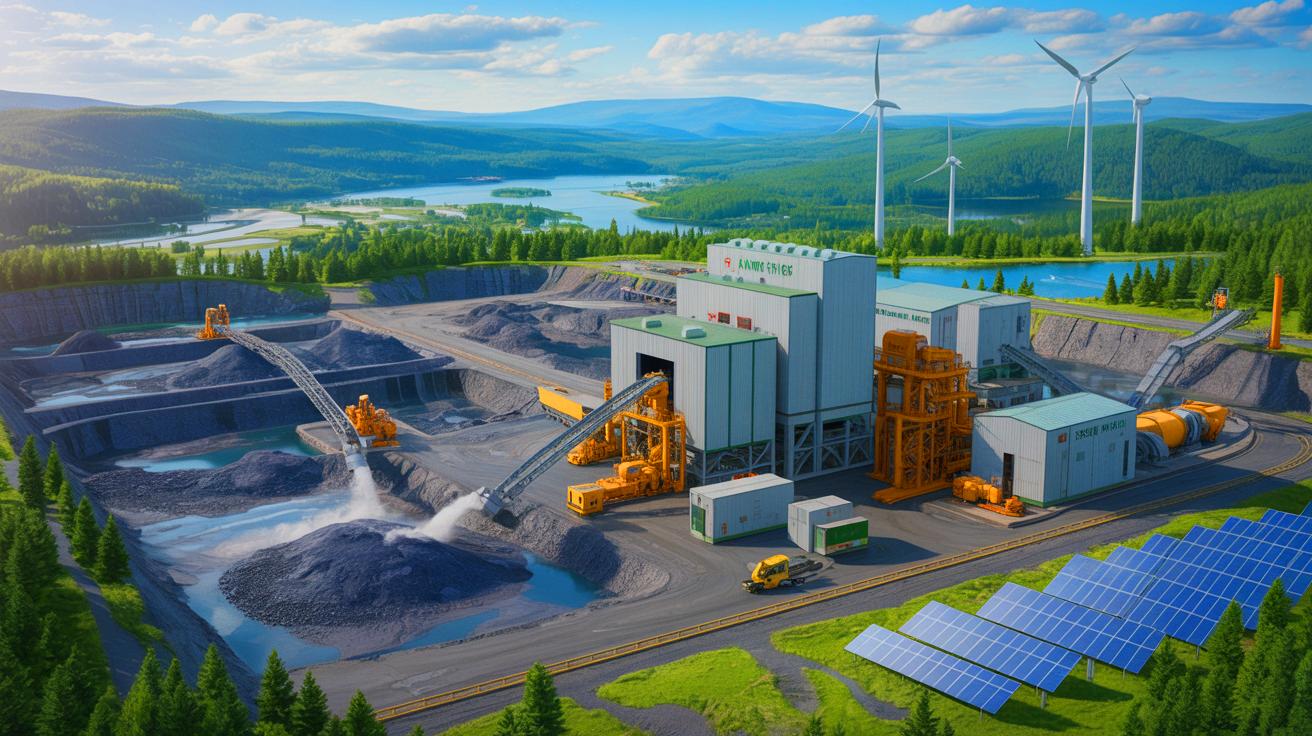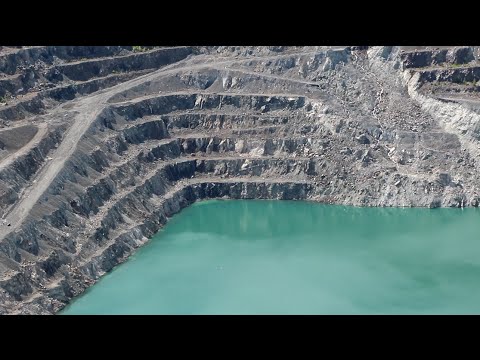- 🌍 Exterra Carbon Solutions plans to repurpose asbestos mine tailings into materials for electric vehicle batteries and carbon storage.
- 🔬 The facility will use a proprietary process to safely neutralize asbestos fibers and produce low-carbon metal oxides and nickel concentrate.
- ♻️ Located in Val-des-Sources, the plant aims to integrate the mining industry into the circular economy and operate with a carbon-neutral footprint.
- 🌱 This initiative could serve as a global model for regions dealing with the environmental impact of past asbestos mining.
In a groundbreaking initiative, a Canadian startup is set to revolutionize the way we handle asbestos mine tailings. With plans to launch a massive processing facility in 2027, this project aims to turn over 330,000 tons of asbestos waste per year into valuable materials for electric vehicle batteries and carbon storage. This ambitious endeavor is backed by significant funding from private investors and the Québec government, reflecting a growing commitment to sustainable solutions. The facility will be located in Val-des-Sources, a town with a deep history tied to asbestos mining, promising a new chapter in environmental innovation.
Repurposing Asbestos Waste: From Hazard to Resource
Asbestos, once celebrated for its fire-resistant properties, became infamous for its severe health risks, including diseases like mesothelioma and lung cancer. Despite its recognition as a human carcinogen since 1955, asbestos has only been banned in a fraction of the world’s countries. This leaves a daunting legacy of toxic waste. However, Exterra Carbon Solutions is on the verge of transforming this challenge into an opportunity. By neutralizing asbestos fibers in leftover mining waste, they aim to produce valuable, carbon-neutral products.
Among these products are low-carbon metal oxides such as magnesium oxide, which has applications in agriculture, water treatment, and pharmaceuticals. Additionally, nickel concentrate, essential for manufacturing electric vehicle (EV) batteries, is a key output. Exterra’s innovative approach also includes a proprietary carbon capture process, which mineralizes carbon dioxide into solid form, effectively sequestering it for millennia. This method could significantly contribute to global decarbonization efforts, setting a precedent for future initiatives.
Mining a New Tomorrow: The Future of Sustainable Practices
Exterra’s journey from concept to reality has involved rigorous testing, including a pre-commercial pilot in Val-des-Sources. The upcoming full-scale facility will leverage Quebec’s vast asbestos mine tailings, estimated at 880 million tons, ensuring a steady raw material supply for over 2,000 years. Olivier Dufresne, CEO of Exterra Carbon Solutions, envisions integrating the mining industry into the circular economy, making it part of the solution to the carbon crisis.
Hub I, the planned facility, will operate with a carbon-neutral footprint, powered entirely by renewable energy. This project not only aims to rejuvenate local industries but also serves as a potential global model for similar operations. Especially in regions struggling with the aftermath of asbestos mining, this initiative could offer a path to sustainable development and environmental restoration.
The Role of Innovation in Environmental Solutions
Innovation lies at the heart of Exterra’s mission. By repurposing hazardous waste, the company is redefining the role of mining in the modern economy. This project exemplifies how cutting-edge technology can address historical environmental issues while paving the way for future advancements. The integration of renewable energy and advanced mineralization processes highlights a commitment to sustainability that goes beyond traditional industrial practices.
Such initiatives underscore the importance of innovation in tackling global challenges. As industries evolve, the emphasis on sustainable practices becomes increasingly crucial. Exterra’s project not only addresses the environmental impacts of asbestos mining but also contributes to the development of cleaner technologies for the future. The company’s efforts represent a significant step in harmonizing industrial growth with ecological responsibility.
Global Implications: A Model for Change
▶
Exterra’s bold endeavor could have far-reaching implications. As countries worldwide grapple with the environmental and health impacts of asbestos, this project offers a scalable and sustainable solution. By turning a hazardous legacy into an asset, Exterra is setting a precedent for innovative environmental practices. This initiative highlights the potential for similar projects in other regions, emphasizing the importance of international collaboration in addressing shared challenges.
The success of this facility could inspire policymakers and industry leaders to prioritize sustainable practices, fostering a more resilient global economy. As the world continues to confront pressing environmental issues, projects like Exterra’s will play a pivotal role in shaping a sustainable future. Can other industries follow suit and embrace innovative solutions to transform their environmental impact?
Did you like it? 4.7/5 (26)


